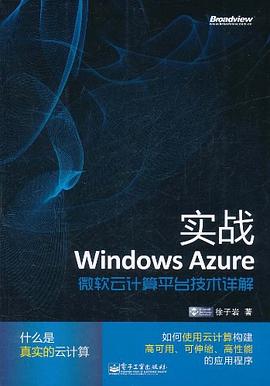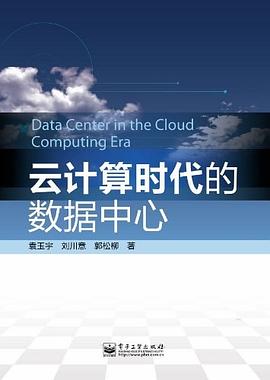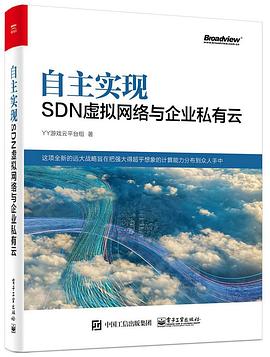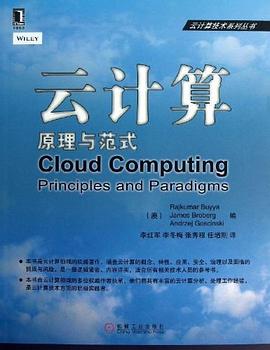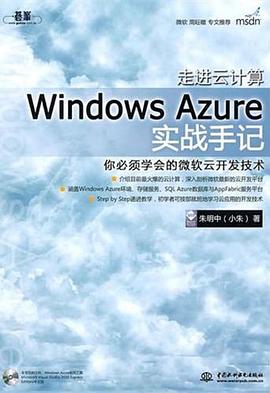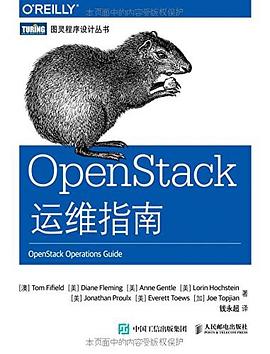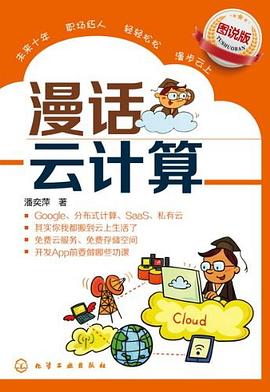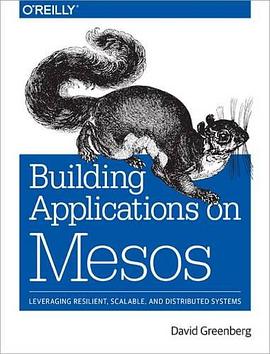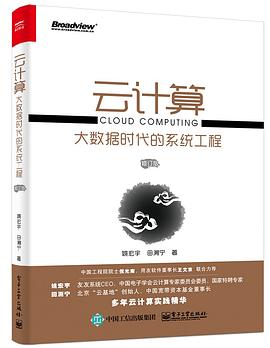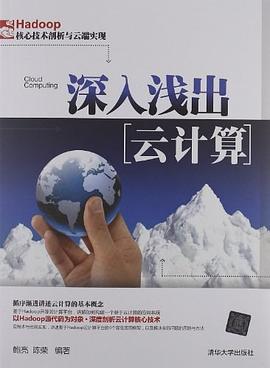目 录
第1章 云计算技术简介 1
1.1 云计算所要解决的问题 2
1.2 云计算平台的分类 4
1.3 微软云计算平台Windows Azure 5
1.3.1 高可用性 5
1.3.2 易于部署和伸缩 6
1.3.3 全球化 6
1.3.4 开发语言和开发模型 7
第2章 Windows Azure云计算平台 9
2.1 Windows Azure平台的组成部分和主要功能 9
2.1.1 Windows Azure 10
2.1.2 Windows Azure相关名词 11
2.1.3 SQL Azure 15
2.1.4 Windows Azure AppFabric 16
2.1.5 Windows Azure Connect 17
2.2 Windows Azure收费模式 18
2.2.1 Windows Azure账户 18
2.2.2 Windows Azure的计费模式 19
2.3 Windows Azure平台成本及性能案例分析 21
2.3.1 北欧某健康资讯网站 22
2.3.2 挪威某零售业管理系统 23
2.3.3 XLR8企业应用平台 24
第3章 Windows Azure计算服务 25
3.1 准备Windows Azure开发环境 25
3.2 第一个Windows Azure应用程序 28
3.2.1 创建Cloud Project和Web Role 28
3.2.2 使用本地模拟器运行和调试Azure应用程序 30
3.2.3 购买Windows Azure 32
3.2.4 通过Developer Portal创建Hosted Service 34
3.2.5 向Staging环境部署Windows Azure应用 39
3.2.6 向Production环境切换 43
3.3 Windows Azure项目组成 45
3.3.1 Windows Azure Project介绍 45
3.3.2 Role及其生命周期模型 54
3.3.3 Configuration的变更和通知机制 58
3.3.4 Windows Azure本地模拟器 62
第4章 Windows Azure存储服务 64
4.1 创建新的Storage Service 65
4.2 使用Table Service 68
4.2.1 Table Service的特点 69
4.2.2 使用Table Storage保存相册信息 72
4.2.3 基于Repository模式的Table Service数据访问层 89
4.2.4 使用Table Service的事务操作 96
4.3 使用BLOB Service 101
4.3.1 BLOB Service的特点 102
4.3.2 使用BLOB Service保存照片 107
4.3.3 使用Shared Access Signatures 119
4.3.4 使用Cloud Drive 123
4.4 使用Queue Service 131
4.4.1 Queue Service的组成及特点 131
4.4.2 在创建照片部分加入生成缩略图的Queue Message 133
4.4.3 创建生成缩略图的Worker Role 135
4.4.4 实现生成缩略图操作 137
第5章 Windows Azure部署与管理 146
5.1 使用Visual Studio部署Azure应用 146
5.1.1 Windows Azure Management API介绍 146
5.1.2 配置Management API证书 149
5.1.3 通过Visual Studio部署 153
5.2 管理Windows Azure 156
5.2.1 Windows Azure平台高可用性的实现 156
5.2.2 部署与就地升级 158
5.2.3 VIP转换 158
5.2.4 Windows Azure平台的管理工具 159
5.3 使用Windows Azure诊断服务 170
5.3.1 Diagnostics Monitor介绍 171
5.3.2 通过代码启动Diagnostics Monitor 174
5.3.3 通过代码配置Diagnostics Monitor 177
5.3.4 通过远程API配置Diagnostics Monitor 181
5.3.5 使用NLog扩展在Windows Azure平台输出日志 185
5.3.6 使用Intellitrace获取异常信息 190
5.4 回顾与总结 194
第6章 SQL Azure 196
6.1 SQL Azure特点 197
6.1.1 易于维护和高可用性 197
6.1.2 弹性和伸缩性 197
6.1.3 开发方式的一贯性 198
6.2 SQL Azure的订阅模式 198
6.3 SQL Azure服务器端架构 199
6.4 SQL Azure与SQL Server的差异 201
6.5 创建SQL Azure服务 202
6.5.1 创建SQL Azure Server 203
6.5.2 通过Developer Portal创建数据库 205
6.6 使用工具管理SQL Azure 207
6.6.1 使用SQL Server Management Studio管理SQL Azure 207
6.6.2 使用Project Houston管理SQL Azure 210
6.7 使用SQL Azure 213
6.7.1 创建Aurora的SQL Azure数据库 214
6.7.2 向SQL Azure导入数据 217
6.7.3 在应用程序中使用SQL Azure 220
6.7.4 基于Windows Azure和SQL Azure的开发部署流程 224
6.8 回顾与总结 226
第7章 Windows Azure Appfabric 227
7.1 服务总线(Service Bus) 228
7.1.1 Service Bus的工作方式 229
7.1.2 使用Service Remoting开放本地的地理位置服务 232
7.1.3 使用Eventing模式 241
7.1.4 配置Service Bus运行环境 246
7.2 访问控制服务(Access Control Service) 247
7.2.1 访问控制服务的原理 248
7.2.2 为地理位置服务加入访问控制 250
7.3 回顾与总结 260
第8章 Windows Azure平台高级应用 261
8.1 Role Endpoint和内部通信 261
8.1.1 Role Endpoint介绍 262
8.1.2 基于Input Endpoint通过Worker Role发布WCF服务 263
8.1.3 动态指定WCF的发布地址 266
8.1.4 使用Internal Endpoint实现Role的内部通信 269
8.1.5 总结 272
8.2 通过远程桌面功能访问Windows Azure的虚拟机 273
8.2.1 通过Visual Studio配置远程桌面功能 273
8.2.2 总结 278
8.3 通过Windows Azure Connect实现本地计算机和云端虚拟机的互连 279
8.3.1 什么是Windows Azure Connect 279
8.3.2 申请Windows Azure Beta Program 281
8.3.3 将本地计算机和Azure VM加入Connect 281
8.3.4 Windows Azure Connect的功能 286
8.4 Web Role的Full IIS特性 289
8.4.1 基于Hosted Web Core方式部署Web Role 289
8.4.2 基于Full IIS部署Web Role 291
8.4.3 使用Full IIS时的注意事项 293
8.4.4 使用Full IIS模式部署多站点和虚拟目录 294
8.4.5 总结 297
8.5 通过Startup功能实现COM组件调用 298
8.5.1 使用Startup功能执行简单的命令 298
8.5.2 Startup配置项介绍 300
8.5.3 使用Startup功能注册COM组件 300
8.6 使用Windows Azure CDN 302
8.6.1 Windows Azure CDN的原理 302
8.6.2 使用Blob Service CDN 306
8.6.3 使用Hosted Service CDN 309
8.6.4 总结 312
8.7 云端的分布式缓存服务AppFabric Cache 312
8.7.1 缓存与分布式缓存 312
8.7.2 创建Windows Azure Appfabric Cache 314
8.7.3 使用Windows Azure AppFabric Cache 316
8.7.4 总结 323
8.8 Access Control Service 2.0 324
8.8.1 ACS v2和统一认证 324
8.8.2 ACS v2的认证流程 326
8.8.3 基于Live ID和Google ID的ASP.NET MVC网站 329
8.8.4 控制ACS的验证逻辑 337
8.9 云端的报表:SQL Azure Reporting CTP 344
8.10 为SQL Azure实现备份和恢复功能 352
8.10.1 使用Database Copy 353
8.10.2 使用Data-tier Application Framework 2.0 355
8.10.3 使用SQL Azure Data Sync CTP 363
8.10.4 三种SQL Azure备份恢复实现的对比 370
8.11 基于SQL Azure数据库的Odata服务 370
8.12 Windows Azure与扩展性 373
8.12.1 横向扩展和纵向扩展 374
8.12.2 应用程序层的横向扩展 376
8.12.3 数据层的横向扩展 380
8.12.4 SQL Azure Federation预览 385
8.12.5 总结 389
8.13 异步工作模型 390
8.13.1 什么是异步工作模型 390
8.13.2 Windows Azure中的异步工作模型 393
8.13.3 在Aurora项目中实现异步工作模型 400
8.13.4 总结 411
本书参考资料 412
· · · · · · (
收起)
